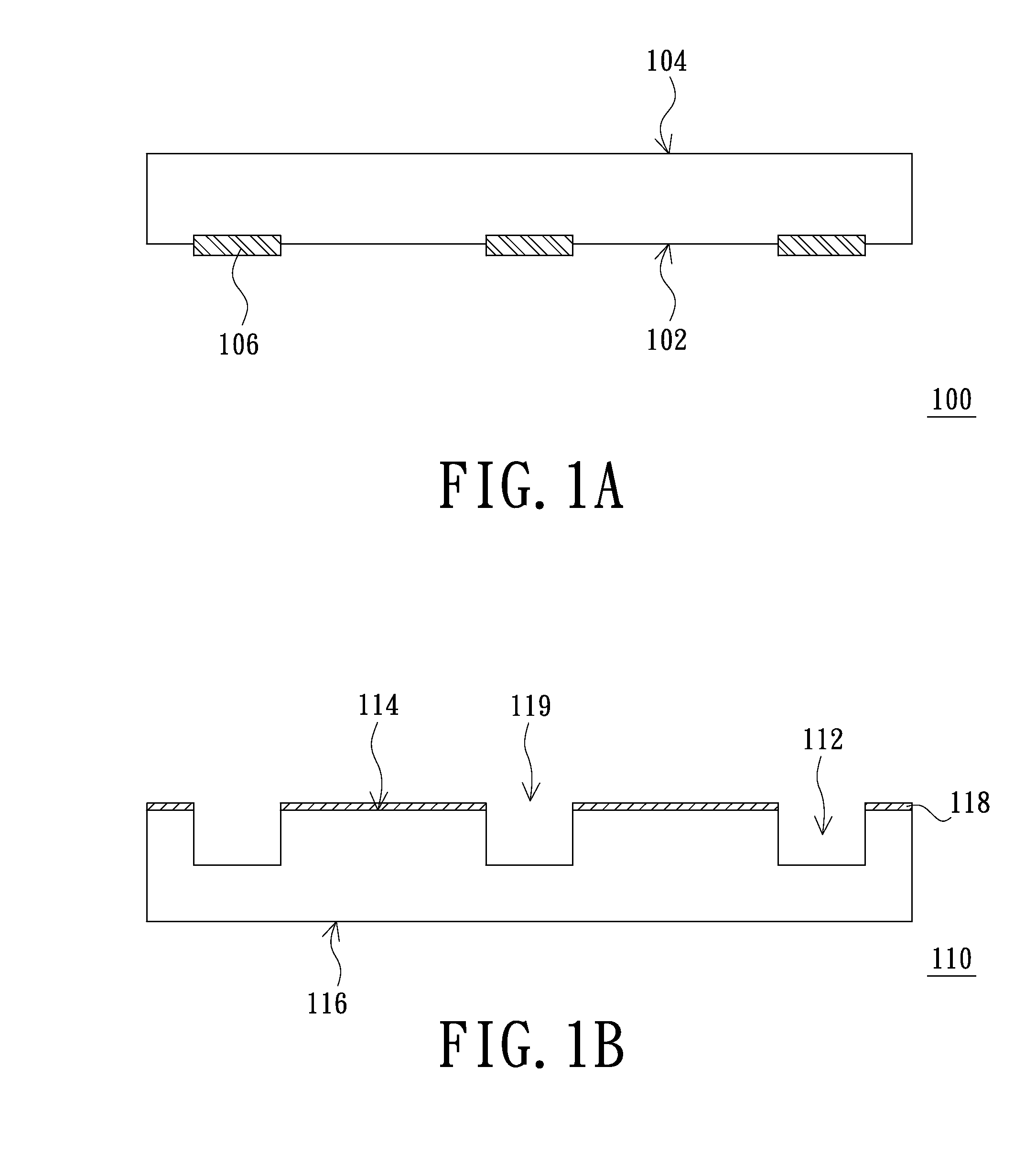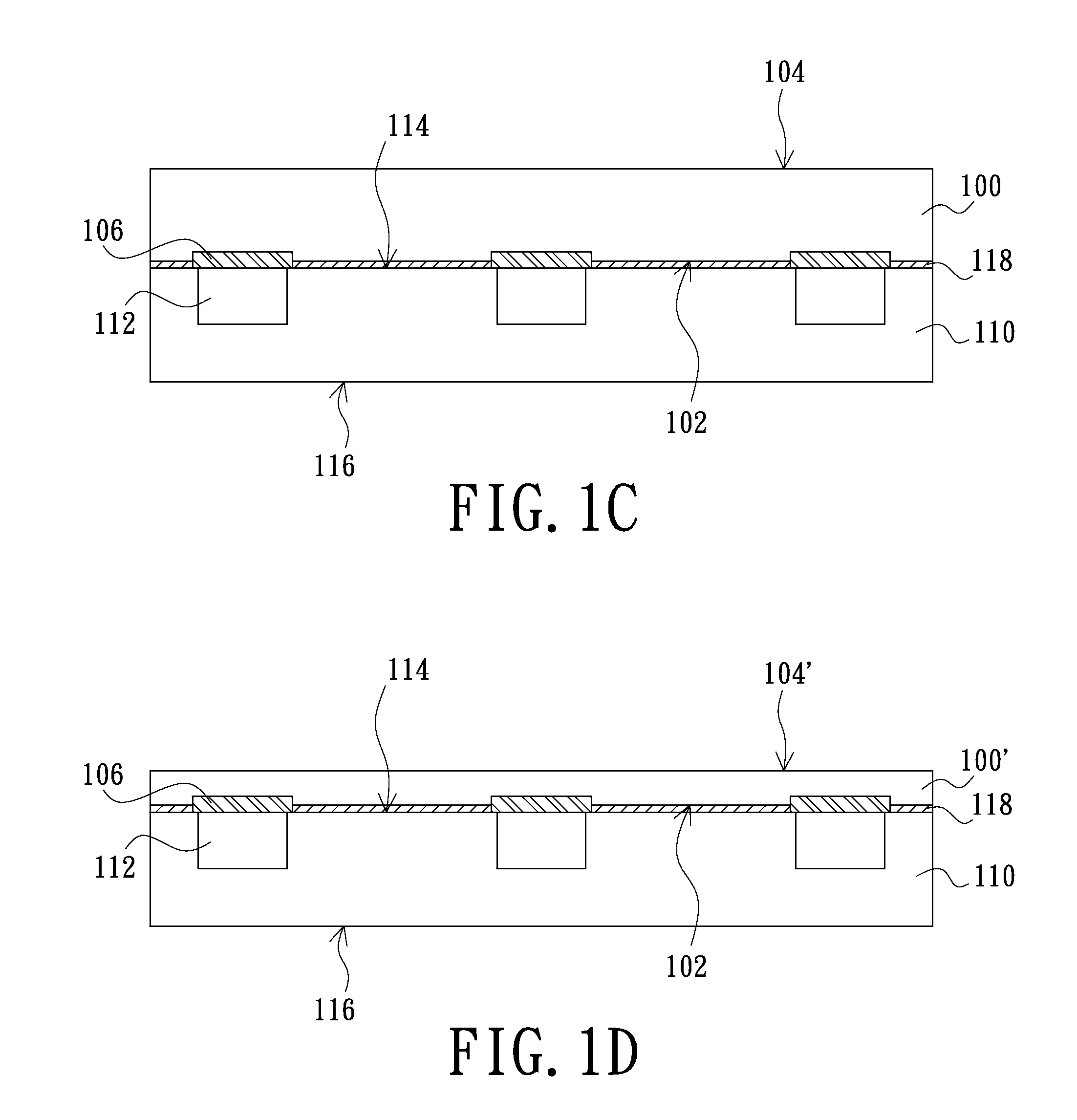Package process of backside illumination image sensor
a backside illumination and image sensor technology, applied in the field of image sensors, can solve the problems of low package efficiency of the package process, limited light sensitive ability of the sensing component, and difficulty in aligning the drilling positions of the holes and the pads, so as to improve package quality, reduce the difficulty of aligning the package process, and reduce the difficulty of the package process
- Summary
- Abstract
- Description
- Claims
- Application Information
AI Technical Summary
Benefits of technology
Problems solved by technology
Method used
Image
Examples
Embodiment Construction
[0022]Referring to FIG. 1A to FIG. 1H, FIG. 1A to FIG. 1H illustrate a process flow of a package process of a backside illumination image sensor in accordance with a first embodiment of the present invention.
[0023]Referring to FIG. 1A, first, a wafer 100, for example, a semiconductor wafer, is provided. The wafer 100 includes a first surface 102 and a second surface 104 opposite to the first surface 102. The first surface 102 has a plurality of pads 106 disposed thereon.
[0024]Referring to FIG. 1B, next, a first carrier 110 is processed to form a plurality of blind vias 112 therein. In detail, the first carrier 110 is provided. The first carrier 110 includes a front surface 114 and a rear surface 116 opposite to the front surface 114. An oxide layer 118 is formed on the front surface 114 of the first carrier 110. Then, the portions of the oxide layer 118 are removed and the blind vias 112 are formed by using an etching process. In other words, the portions of the oxide layer 118 are ...
PUM
 Login to View More
Login to View More Abstract
Description
Claims
Application Information
 Login to View More
Login to View More - R&D
- Intellectual Property
- Life Sciences
- Materials
- Tech Scout
- Unparalleled Data Quality
- Higher Quality Content
- 60% Fewer Hallucinations
Browse by: Latest US Patents, China's latest patents, Technical Efficacy Thesaurus, Application Domain, Technology Topic, Popular Technical Reports.
© 2025 PatSnap. All rights reserved.Legal|Privacy policy|Modern Slavery Act Transparency Statement|Sitemap|About US| Contact US: help@patsnap.com



